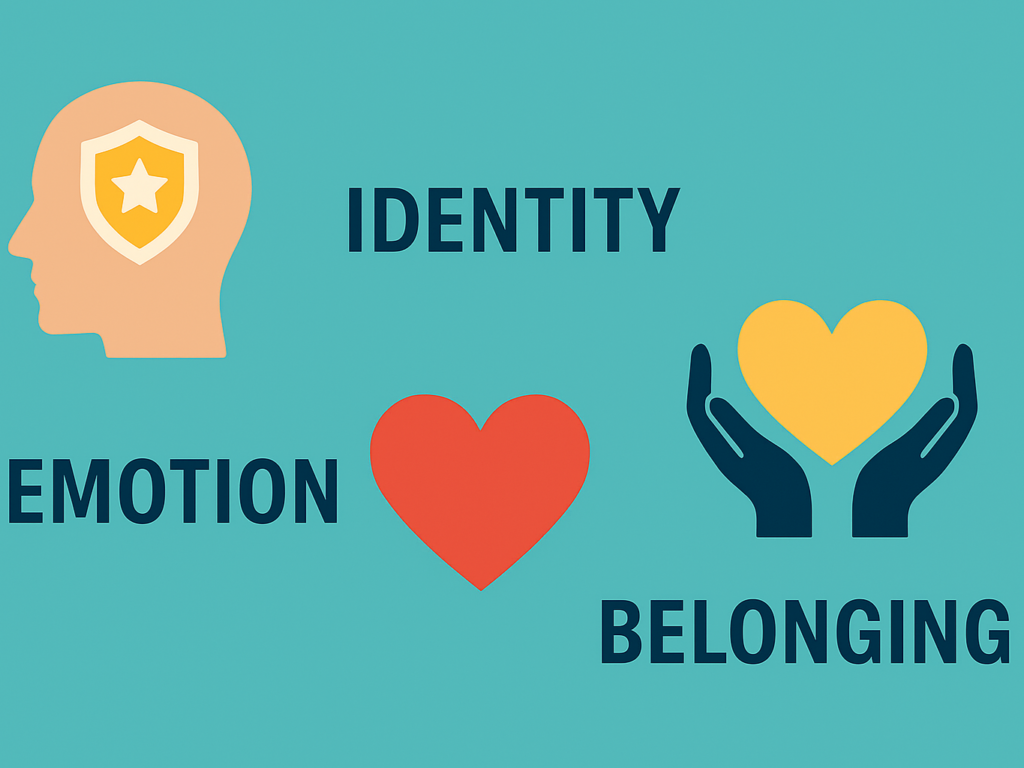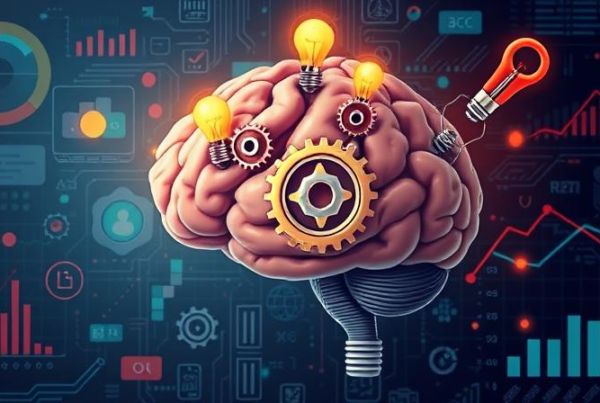Why do people willingly pay $100 for a product that costs only $10 to make? The answer lies in the psychology of branding, a strategy that taps into emotions, identity, and trust.
Successful brands don’t just sell products; they create experiences that connect with consumers on a deeper level. For example, Apple products symbolize innovation and status, while Nike inspires confidence and determination. This emotional connection builds loyalty and allows brands to charge premium prices.
Psychologists explain this using concepts like the mere exposure effect, where repeated exposure to a brand creates familiarity and trust. Additionally, brands that align with a consumer’s identity feel more personal, making people proud to support them.
In this guide, you’ll discover how brand psychology shapes buying behavior, builds loyalty, and even allows brands to charge premium prices. Plus, you’ll learn actionable tips to build a powerful brand that resonates with your audience.
Dove’s “Real Beauty” Campaign

Problem: Traditional beauty ads often showcased unrealistic standards, leaving many women feeling excluded and insecure. The beauty industry heavily favored airbrushed models, reinforcing unattainable ideals.
Solution: Dove’s “Real Beauty” campaign broke the mold by featuring real women of diverse shapes, sizes, and ethnicities. The campaign celebrated natural beauty, encouraging self-acceptance and redefining beauty standards.
Result: The campaign resonated globally, sparking important conversations about body image. Dove’s sales soared, and the brand became a symbol of inclusivity and empowerment. By embracing authenticity, Dove not only boosted consumer trust but also set a new standard in beauty marketing.
What Is the Psychology of Branding?
The psychology of branding is the study of how emotions, perceptions, and cognitive biases influence consumer behavior. It shapes trust, loyalty, and identity, making brands more than just products. By triggering subconscious associations, branding creates deep emotional connections, driving decisions, shaping culture, and establishing long-term brand loyalty and recognition.
1. Why Emotions Matter in Branding
Humans are emotional decision-makers. Research shows that 95% of purchasing decisions happen in the subconscious mind, driven more by feelings than logic. Successful brands tap into these emotions to create stronger connections with their audience.
Here are some powerful examples of Emotional branding:
(i) Innocent Drinks (Wholesomeness and Humor)
Innocent’s playful packaging, witty product descriptions, and eco-friendly messaging create feelings of trust, fun, and positivity. This lighthearted tone makes their healthy drinks feel refreshing, not just in taste, but in personality.
(ii) Chewy (Compassion and Care)
Chewy goes beyond being an online pet retailer, it’s a brand built on empathy. They send handwritten condolence cards when a pet passes away and offer thoughtful customer support, making pet owners feel valued and understood.
2. The Role of Identity in Branding
People are drawn to brands that mirror their identity or aspirations. This concept, called identity-based branding, fosters deep connections by aligning brand values with personal beliefs and self-image.
For instance:
(i) Gymshark (Strength and Self-Improvement)
Gymshark’s branding appeals to fitness enthusiasts who are passionate about growth, hard work, and transformation. By aligning itself with athletes and influencers, Gymshark connects with those striving to better themselves.
(ii) Patagonia (Environmental Activism and Adventure)
Patagonia’s strong stance on sustainability speaks to eco-conscious consumers who want to align their lifestyle with their environmental values.
The most memorable brands connect with consumers on a deeper level. By aligning with emotions, values, and identity, your brand can create lasting connections that turn buyers into devoted fans.
Why Customers Don’t Buy Products, They Buy Feelings
People don’t just buy products; they invest in emotions, experiences, and identities. Successful brands create deep emotional triggers, making their offerings feel essential, meaningful, or aspirational. By tapping into desires, memories, and values, they transform products into symbols of belonging, success, and personal expression, fostering lasting customer loyalty.
1. Why Emotions Drive Purchasing Decisions
Research shows that emotional responses are 3 times more influential than rational thought when it comes to brand loyalty. According to Harvard professor Gerald Zaltman, 95% of purchasing decisions happen in the subconscious mind, driven by emotions rather than logic.
Why does this matter? Because emotions create memories, and memories build connections. When a brand consistently triggers positive emotions, it becomes memorable and trusted.
2. The Role of Emotional Triggers in psychology of Branding
Emotional triggers or Emotional branding are psychological cues that shape consumer perceptions and decisions. By evoking emotions like trust, nostalgia, or excitement, brands create deeper connections, foster loyalty, and drive sales. When consumers feel emotionally attached, they don’t just buy products, they invest in experiences, identities, and relationships that keep them coming back.
Key Emotional Triggers in Branding and How They Work
Emotional triggers are powerful tools that shape consumer behavior by influencing feelings, decisions, and loyalty. Successful brands tap into these emotions to create meaningful connections.
(i) Joy: Creating Positive Brand Experiences
- Joy encourages positive associations, making consumers feel happy when interacting with your product. Brands often use uplifting designs, memorable experiences, or positive storytelling to evoke this feeling.
- Coca-Cola links its brand to joy through heartwarming campaigns featuring family gatherings, celebrations, and nostalgic moments. This emotional connection keeps consumers returning for positive experiences.
(ii) Trust: Building Credibility and Loyalty
- Trust reduces consumer anxiety, builds credibility, and reassures customers they’re making the right choice.
- Apple cultivates trust through its sleek design, user-friendly experience, and focus on privacy and security. This sense of reliability makes Apple devices feel like a safe investment.
(iii) Belonging: Fostering Community and Connection
- Belonging inspires loyalty by creating a sense of inclusion. People naturally connect with brands that reflect their values or lifestyle.
- Nike taps into the power of belonging by inspiring athletes and everyday individuals alike to feel empowered and part of a movement. Campaigns like “Just Do It” connect with those striving to push their limits.
(iv) Fear and Urgency: Driving Action Through Emotion
- Urgency motivates consumers to act quickly by tapping into their fear of missing out (FOMO).
- Apple frequently uses limited-edition product releases or countdown timers during product launches to spark urgency and excitement, encouraging immediate purchases.
3. Why Emotional Branding Works
People may forget product features, but they never forget how a brand makes them feel. The psychology of branding shows that emotions like joy, trust, and belonging create lasting connections. When customers resonate emotionally, they become loyal advocates, driving repeat sales and word-of-mouth marketing, turning buyers into lifelong brand believers.
The Science Behind Brand Loyalty

Why do some brands create die-hard fans while others struggle? The secret lies in psychology, familiarity and emotional pairing. When brands consistently evoke emotions and feel familiar, they become a trusted part of consumers’ lives, fostering deep loyalty and strong connections that keep customers coming back.
1. Why Familiarity Breeds Trust
Humans are wired to trust what feels familiar. This psychological principle, known as the Mere Exposure Effect, explains why people develop a preference for things they encounter repeatedly.
For example, studies show that consumers are 80% more likely to choose a brand they recognize over one they’ve never heard of, even if the product quality is identical.
Key Elements of Brand Loyalty
(i) The Power of Repetition in Emotional Branding
Consistently showcasing your logo, slogan, or message builds strong brand memory. McDonald’s golden arches are globally recognized due to repeated exposure. The more people see a brand, the more familiar and trustworthy it feels, increasing recall, recognition, and preference, making repetition a powerful tool for long-term brand success.
(ii) Why Brand Consistency Builds Trust
Customers trust brands that deliver the same quality and experience every time. Starbucks ensures loyalty by making every cup taste identical, whether in New York or Tokyo. Consistency builds reliability, reinforcing customer expectations and deepening emotional bonds, ultimately transforming occasional buyers into lifelong, devoted brand advocates.
(iii) Emotional Pairing: The Key to Brand Loyalty
As Alex Hormozi said, “Branding is deliberate pairing.” Successful brands repeatedly associate their products with positive emotions until they become inseparable. Coca-Cola links itself to happiness, Nike to determination. By forging emotional connections, brands become more than products, they become experiences, identities, and symbols customers deeply relate to.
2. How Emotional Triggers Drive Loyalty
The strongest brands create deep emotional connections by engaging customers on a psychological level. This is the power of emotional branding, it goes beyond products and taps into feelings like trust, joy, and belonging. The psychology of branding examples proves that when brands consistently evoke emotions, they turn customers into loyal advocates who keep coming back.
(i) Storytelling That Sparks Emotion
Relatable narratives make brands feel human. Apple’s ads focus on creativity and individuality, evoking inspiration rather than just selling products. By crafting compelling stories, brands create emotional resonance, making customers feel personally connected.
(ii) Visual Identity That Reinforces Feelings
Colors, logos, and design elements trigger subconscious emotions. Red ignites excitement (Coca-Cola), while blue builds trust (Facebook). A strong visual identity ensures instant recognition and reinforces the brand’s emotional message.
(iii) Community Building for Deeper Engagement
People love belonging to something bigger than themselves. Nike fosters a culture of motivation, while Harley-Davidson creates a tribe of passionate riders. When brands build communities, customers feel valued and stay loyal for life.
The Power of Identity in Branding
People don’t just buy products, they invest in symbols of identity and aspiration. Successful brands tap into this by shaping their image to reflect their audience’s values, dreams, and lifestyle. By aligning emotionally, they transform from mere businesses into powerful extensions of their customers’ personal stories and self-expression.
1. Why Identity Drives Consumer Behavior
Psychologists call this the Self-Congruity Theory, which states that people are drawn to brands that mirror their self-image. When a brand aligns with a customer’s personality or values, it creates a deep emotional bond, making loyalty feel natural rather than a choice.
Identity based psychology of branding examples
(i) Tesla (Innovation, Status, and Eco-Consciousness)
Tesla attracts forward-thinking consumers who see themselves as tech-savvy, environmentally conscious, and ahead of the curve. Owning a Tesla isn’t just about driving a car, it’s about embracing a progressive identity.
(ii) Yeti (Ruggedness, Adventure, and Durability)
Yeti’s branding appeals to outdoor enthusiasts, campers, and thrill-seekers. By promoting toughness and resilience, Yeti products become symbols of adventure and a durable lifestyle.
(iii) Harley-Davidson (Freedom, Rebellion, and Brotherhood)
Harley-Davidson’s branding is deeply tied to individuality and a rebellious spirit. For many riders, owning a Harley is a statement of independence and belonging to a like-minded community.
2. How to Build an Identity-Driven Brand
(i) Know Your Audience Deeply
Understand your customers’ values, aspirations, and self-image. What do they stand for? What motivates them? The strongest brands don’t just sell products; they reflect the identities of the people who buy them.
(ii) Align Your Brand with Their Values
Your messaging, visuals, and product experience should reinforce what your audience cares about. Patagonia thrives by embracing sustainability, while Apple symbolizes creativity and innovation. Authenticity is key.
(iii) Foster a Sense of Community
People crave belonging. Encourage interaction through social media, events, and brand advocacy. Harley-Davidson isn’t just selling motorcycles, it’s creating a lifestyle that unites passionate riders worldwide.
Customers aren’t just buying products, they’re investing in brands that align with who they are or who they want to be. Brands that connect on this deeper level build stronger, more loyal communitie.
How to Use Psychology to Build a Strong Brand

Creating a powerful brand goes beyond logos and slogans, it’s about forging meaningful connections. By leveraging psychological triggers like identity, emotion, and belonging, you can build a brand that resonates deeply, earns loyalty, and becomes an integral part of your audience’s lives.
1. Align Your Product with Your Audience’s Core Values
People don’t just buy products; they invest in brands that reflect their identity, emotions, and aspirations. To build a powerful connection, your brand must align with values your audience deeply cares about. When a brand successfully embodies a core value, it becomes more than a product, it becomes a lifestyle choice.
- Freedom: Jeep doesn’t just sell vehicles; it sells the spirit of adventure. Its rugged design and off-road capabilities make customers feel like explorers, reinforcing their desire for independence and excitement.
- Success: Rolex is not just a watch; it’s a status symbol. It represents years of hard work, achievement, and exclusivity, making it the preferred choice for high achievers.
- Security: ADT isn’t just a security system; it’s peace of mind. By positioning itself as the protector of homes and families, it creates a deep emotional bond with customers who prioritize safety.
2. Use Storytelling and Visuals to Strengthen Emotional Bonds
Humans are wired for stories. Neuroscience shows that storytelling activates multiple areas of the brain, making information more memorable than plain facts. Successful brands use narratives to create emotional connections and make their message stick.
- Airbnb goes beyond travel, it shares heartfelt stories of people finding “home” in unfamiliar places. Their messaging taps into emotions like warmth, connection, and inclusivity.
- Always (#LikeAGirl) turned a simple feminine hygiene campaign into a movement for empowerment. By redefining what it means to do something “like a girl,” they connected deeply with young women worldwide.
- Ben & Jerry’s doesn’t just sell ice cream; it stands for social activism. Through bold visuals and compelling storytelling, the brand aligns itself with justice, climate action, and equality, making customers feel part of something bigger.
3. Foster a Loyal Community Through Shared Experiences
People crave belonging. When a brand creates a strong sense of community, it turns customers into passionate advocates who feel like they are part of something special. A strong brand community enhances loyalty, trust, and engagement.
- LEGO doesn’t just sell toys, it encourages creativity and problem-solving. Through fan conventions, social media challenges, and collaborative building experiences, LEGO nurtures a dedicated global community.
- Peloton builds an emotional connection through interactive fitness classes, where users feel a sense of camaraderie with instructors and fellow riders. This shared experience fosters motivation and long-term brand loyalty.
- Gymshark engages fitness enthusiasts by encouraging them to share their journeys. By promoting user-generated content, testimonials, and transformation stories, Gymshark strengthens its brand identity and customer trust.
4. Stay Consistent to Build Trust and Recognition
Consistency is the backbone of a strong brand. It builds familiarity, which in turn fosters trust. When a brand delivers the same message, tone, and quality across all platforms, customers develop a sense of reliability and emotional security.
- FedEx is synonymous with reliability. Its branding consistently emphasizes fast, secure delivery, reinforcing its promise to customers.
- Spotify uses playful, vibrant messaging across ads, playlists, and notifications. Its consistent tone makes the brand feel personal, engaging, and fun.
- Apple maintains a sleek, minimalist, and premium aesthetic across its products, stores, and marketing. This consistency reinforces its brand identity as innovative and high-end.
Successful branding is less about selling and more about creating emotional connections. The psychology of branding examples shows that by pairing your brand with values, storytelling, community, and consistency, you can leave a lasting impact on your audience.
What Happens When Branding Goes Wrong
No brand is immune to missteps. Even the most successful companies have faced backlash, lost customer trust, or seen sales plummet due to branding mistakes. When a brand fails to align with its audience’s expectations, the consequences can be swift and severe, negative press, boycotts, and long-term damage to reputation.
1. Why Do Brands Stumble?
Branding failures often stem from three key missteps:
(i) Inconsistent Messaging
A brand that sends mixed signals confuses customers. If a company’s tone, values, or messaging shift drastically, consumers may feel disconnected. For example, a brand known for luxury suddenly marketing itself as budget-friendly can dilute its image and credibility.
(ii) Ignoring Core Audience Values
A brand’s loyal customer base is its foundation. Drastic changes in branding, partnerships, or messaging that don’t align with customer values can cause disengagement. For instance, when Bud Light attempted to reposition itself for a new audience, they unintentionally alienated their core demographic, leading to significant backlash and declining sales.
(iii) Overpromising and Under Delivering
When brands promise more than they can realistically provide, disappointment follows. A tech company launching a revolutionary product with exaggerated claims, only for it to fall short., can lead to consumer distrust.
2. The Cost of Branding Mistakes
A branding misstep isn’t just a momentary blunder, it can have lasting financial and reputational consequences. Negative social media reactions, viral boycotts, and declining stock prices are all potential outcomes of poor branding decisions.
For example, Bud Light’s misalignment resulted in:
- A 17% drop in sales over six weeks.
- A loss of $395 million in revenue in a single quarter.
- A decline in brand loyalty, as some customers permanently switched to competitors.
3. How to Recover from Branding Mistakes
As branding expert Alex Hormozi puts it, “Overwhelm the negative with more of the positive.” A branding misstep doesn’t have to be the end, it can be a turning point for improvement. Here’s how:
- Acknowledge the Mistake: Brands that openly admit their missteps regain credibility faster. Transparency and authenticity show customers that a brand values their trust.
- Refocus on Your Audience: When a brand goes off course, it must return to its core audience’s expectations. Reinforcing core brand values and aligning messaging with customer needs can help rebuild trust.
- Deliver Positive Experiences: A well-crafted campaign, improved product offerings, or exceptional customer service can reshape public perception and restore a brand’s reputation.
Branding mistakes don’t have to be permanent. When companies handle missteps with honesty, corrective action, and a renewed focus on their audience, they can turn a crisis into an opportunity for stronger brand loyalty.
How to Measure the Psychological Impact of Your Brand
Measuring your brand’s emotional impact helps you understand how well it resonates with consumers. Strong brands don’t just create awareness, they influence perceptions and shape behavior.
1. Key Metrics to Assess Brand Impact
(i) Reach: How Far Does Your Brand’s Message Travel?
Brand awareness is the foundation of growth. If people don’t know your brand exists, they can’t engage with it. Measuring reach helps you understand how visible your brand is across different platforms.
How to Measure It:
- Use Google Analytics to track website traffic and unique visitors.
- Analyze social media insights to see impressions, views, and audience demographics.
- Monitor SEO rankings and keyword search volume to gauge brand visibility.
If your brand is gaining high impressions on Instagram but not converting to website visits, it might be time to refine your call-to-action or optimize your website experience.
(ii) Influence: Are Consumers Engaging with Your Brand?
Visibility alone isn’t enough, your audience needs to interact with your brand. Influence measures how effectively your brand message encourages engagement and action.
How to Measure It:
- Track click-through rates (CTR) on ads, emails, and social media links.
- Measure social media engagement (likes, shares, comments) to see how people are reacting to your content.
- Use referral traffic to analyze how often people share your brand through word-of-mouth.
A brand with high social shares but low conversion rates might need a clearer value proposition or stronger calls to action in its marketing materials.
(iii) Direction: Is Your Brand Shaping Consumer Perception the Way You Intend?
A brand isn’t just what you say it is, it’s what customers believe it is. Ensuring your audience perceives your brand the right way is critical for long-term success.
How to Measure It:
- Conduct customer surveys to gather insights on brand perception.
- Use online reviews and testimonials to identify recurring themes in customer experiences.
- Leverage social listening tools (like Brandwatch or Mention) to track sentiment analysis.
If a sustainable clothing brand discovers that customers see them as trendy but not eco-friendly, they may need to reinforce their sustainability messaging through storytelling and transparency.
2. How to Gather Deeper Insights
- Feedback Surveys: Ask customers what emotions they associate with your brand. This reveals whether you’re evoking feelings like trust, excitement, or security.
- Social Media Monitoring: Track comments, mentions, and sentiment trends to see how people emotionally connect with your brand in real-time.
- Review Analysis: Positive reviews often highlight emotional triggers that resonate most, like reliability, comfort, or empowerment.
Measuring emotional impact isn’t just about data, it’s about understanding how your brand makes people feel and ensuring those emotions align with your message.
Final Thoughts: Branding Is a Long-Term Game
Building a powerful brand is a journey, not a sprint. The psychology of branding reveals that success comes from time, consistency, and emotional connection. Brands that create meaningful relationships don’t just gain customers, they build loyal advocates willing to pay premium prices.
People don’t just buy products; they buy feelings, identity, and experiences. When your brand makes customers feel seen, valued, and inspired, they stick around.
Mastering the psychology of branding isn’t just about selling, it’s about building trust and emotional resonance. Do that consistently, and your brand will thrive for years to come.





